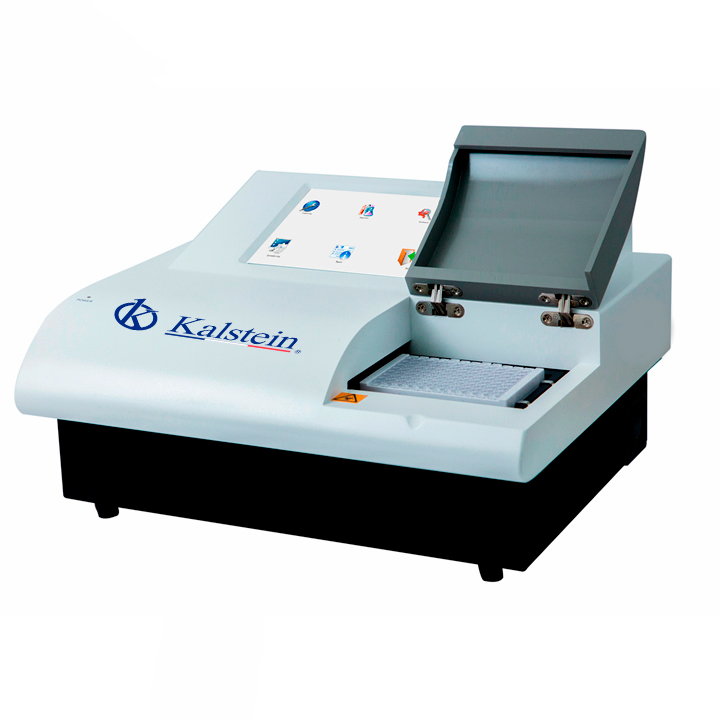Microplate readers are optical equipment used for the detection of phenomena, physical, chemical or biological, by reading the absorbance. They are also known as ELISA readers or spectrophotometers, as they are associated with the ELISA test or Enzyme-Linked Immunosorbent Assay, a laboratory technique used for the detection of antigens in samples. Microplate readers function similarly to uv-visible spectrophotometers by measuring the amount of light that is absorbed by a sample at different wavelengths. They are composed of 3 main elements, the detector, the monochromator and the light source.
These equipment are especially used to carry out qualitative analysis or quantitative analysis in different industries, biotechnological laboratories, clinical, biochemical, research or development laboratories, among others. For this reason it is very important that they are calibrated, a good calibration determines the performance of said equipment and therefore, the quality of the results obtained.
Microplate readers or ELISA readers
The microplate reader or ELISA reader, is a type of spectrophotometer, differs from conventional ones because it has grids or filters that limit the wavelength to be used, that is, they cannot work in wide wavelength intervals, usually work in ranges between 400 nm and 750 nm (visible region), very few work with ultraviolet light and perform analyzes between 340 nm and 700 nm.
The optical system of the microplate readers is designed to direct light to the microwells or wells of the microplate, which is where the sample being analyzed is deposited. The light passes through the sample, this beam has a diameter that varies between 1 mm to 3 mm. The detection system receives the light energy that passes through the sample, then amplifies and measures the absorbance, finally, through its reading system, transforms the measured into data that can be analyzed by the user. The microplates in which the sample is placed are made of polystyrene, have a defined number of microwells that, usually, is 96, arranged in a configuration of 8 rows by 12 columns. Today, there are many types of microplate readers, from very simple models to more sophisticated ones that have specific reading programs.
Calibration of microplate readers
The reason why any microplate reader or ELISA reader must be calibrated is because, through this process, the instrumental bias and uncertainty of the results obtained by the equipment are determined. The scale that is calibrated in the ELISA readers is the photometric, this is done through neutral density filters, finally, the magnitude that is calibrated is the absorbance. The filters used are circular in shape and are placed on a metal plate that has the same dimensions of the microplate as the ELISA reader.
Calibration of microplate readers is a procedure that must be performed by a laboratory technician or by trained personnel who know the equipment and can follow the instructions that must be included in the equipment. To carry out the calibration it is necessary to have a set of gray filters, which are mounted on a metal plate similar to the analysis microplate. The filters can be used to perform calibrations at the wavelengths operated by the equipment, i.e. they can come in the following wavelengths: 405 nm; 450 nm; 490 nm; 550 nm; 620 nm; 630 nm; 690 nm; and 750 nm.
Kalstein brand microplate readers
At kalstein we are leaders in MANUFACTURERS of a wide range of instruments and equipment for research and laboratory. Our models are characterized by having the latest technology at the most accessible PRICES found in the market. If what you are looking for is a microplate reader, it is in the right place, our YR model ELISA reader is characterized by:
- Windows operation interface, figure button, mouse operation, touch screen.
- 96-well plate, multiple tests on a single plate.
- Stirring plate, speed and adjustable lime.
- You can add or modify open systems, test items, and parameters.
To make the PURCHASE of your microplate reader with us, just follow the following link HERE and quote your product, of course, at all times you will be advised by our experts. HERE

